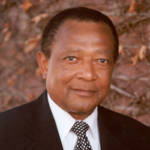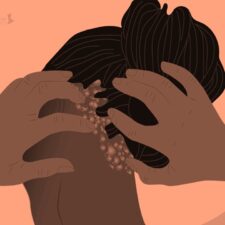 As the leader of the National Medical Association, I have the responsibility to provide a perspective to our constituents on key issues in Medicine that are important to us and to the patients whom we serve. One of those issues is TRUST, which has special meaning to people who have been subjected to so many abuses and indignities over the past 400 years.
As the leader of the National Medical Association, I have the responsibility to provide a perspective to our constituents on key issues in Medicine that are important to us and to the patients whom we serve. One of those issues is TRUST, which has special meaning to people who have been subjected to so many abuses and indignities over the past 400 years.
In the tradition and in memory of the late legendary Howard University School of Medicine professor, civil rights activist, former NAACP president, past president of the National Medical Association, philosopher, and my personal mentor and hero, W. Montague Cobb, MD, Ph.D, who was also Editor Emeritus of this Journal, I submit the following perspective on this topic, which will be incorporated into my forthcoming book, Blacks in Medicine: Clinical, Demographic, and Socioeconomic Correlations (Springer Science & Media, 2017).
I. Historical Retrospective
It is axiomatic that patients must trust their doctors, otherwise the treatment that would be given will not succeed. The purpose of this article is to explore the elements of trust as applied to the doctor-patient relationship, especially as it is viewed by African American and other minority patients and healthcare providers. It is necessary to go back in history and determine what the situation has been for African Americans, because our history has been unlike that of any other sub-population group in this country.
When blacks first came to this country in 1619, one year before the landing of the Mayflower, they came in chains and in bondage, snatched from their native Africa and loaded aboard slave ships and transported here through the Middle Passage.
Once here, they were subjected to the most atrocious living and working conditions imaginable, and when they became ill, they were treated with massive doses of cathartics and other medicinals more fitting for treating horses, such as croton oil, which induced heavy diarrhea, and tartar emetic, which caused effusive vomiting.
Thus cleansed and purged, the slave who was unfortunate enough to become ill was immediately returned to work in the fields, because the master did not want sickness to cause a loss of his revenue brought in by his slave’s labor.
A slave was a commodity, and commodities had to be maintained in top working condition in order to maximize income on the plantation. Needless to say, the slaves did not trust the master’s medical ministrations, and they preferred to use their own treatments, which consisted of voodoo and hoodoo potions, practices and folkremedies brought over from Africa. Sometimes these were successful, but they often resulted in disastrous side-effects which might lead to more disability than they started with.
Over time, the slaves developed their own practitioners, called “slave doctors”, who attained considerable fame in their localities. Some of these slave doctors went on to become quite successful and many were credited with curing specific diseases and conditions such as snakebite and rabies. Some even bought or were granted their freedom.
A very few went on to medical schools, and the first black graduate of an American medical institution was David John Peck in 1847. After the Civil War ended, several black medical schools were started so that African Americans could treat their own. The first to open was Howard University School of Medicine in 1868, and by 1910 there were 11 such schools.
However, after the Flexner Report on Medical Education in the United States and Canada was commissioned by the Federal Government, 9 of these institutions were closed on the grounds that they were not qualified to produce competent doctors, and by 1930 the number had been reduced to 2: Howard, and Meharry Medical School in Nashville, Tennessee.
The Flexner Report, written byDr. Abraham Flexner more than 100 years ago, stated that black medical schools should restrict their efforts to training “Negro sanitarians” rather than surgeons, because blacks were a source of infection and contagion which presented a threat to whites.
As a result, the production of a sufficient number of black doctors to treat the health problems of a growing black population was perpetually crippled, thus adding to the slave health deficit, which Byrd and Clayton maintain has left African Americans in a continually negative health situation compared to whites. Accordingly, the number of black doctors in this country has never been above 5 % of the total number of American physicians, which is out of proportion with the total black population of 12 percent.
To complicate the problem of inadequate health care delivery for blacks, many white doctors refused to care for these patients. Black babies were delivered at home by midwives rather than by physicians, who were not available, and in any case, hospitals would not admit black patients.
With this type of background, it is no wonder that African Americans learned to mistrust the medical system, which they perceived as meaning them no good and possibly meaning them harm. Once they were able to be admitted to hospitals under the separate but equal system, they feared that they might never come home again, so an admission to the hospital was looked upon rather ominously, like a death sentence instead of a chance to restore health.
Any trust in the medical system which was developed at that time was born out of desperation as well as from a carryover from slavery of a feeling of obligation and loyalty to the white man. Black people had been conditioned to do as they were told, and they complied blindly to medical orders rather than doubting or questioning the system. This kind of trust was not real; it was artificial and was based on fear, domination, and intimidation.
Another aspect of the early medical treatment of blacks which engendered mistrust for the system was the fear that blacks had of becoming unwilling and unwitting subjects of experimentation.
They had good grounds for this fear. During slavery, many famous white doctors bolstered their careers by giving public exhibitions of experimental medical procedures. These demonstrations were often performed out in an open square, as was the habit of Dr. J. Marion Sims, who is considered the father of American gynecology.
Dr. Sims, a white man who never graduated from medical school, would openly display surgical and gynecological conditions in slave women while he lectured to the audience abouthis technique of treating these conditions.
This unsavory practice has resounded down through the generations to this very day, due to the fact that black patients have been made to feel disrespected by doctors. This pattern of disregard for privacy, lack of dignity, scorn, and abuse was carried over to medical schools and was taught to students eager to learn from the masters of medicine about techniques to be refined and applied for the benefit of white patients.
Blacks were used to demonstrate those techniques, and the demonstrations continued even after the black patients died, in the autopsy rooms and morgues. It is no small wonder, therefore, that African American patients declined to go into hospitals when they fell ill, and it should not be surprising that the families of the deceased refused to allow post-mortem examinations—autopsies--to be performed on their deceased relatives.
The Federal government became officially involved in the miscarriage of medical justice in two principal ways. First, it declared in a Supreme Court ruling in 1857, the Dred Scott decision, that a black man was equal to only 3/5 of a white man and had no rights that whites were bound or obligated to respect.
In effect, the Dred Scott decision inculcated a culture of black inferiority into our society, an impression that still hangs over us to this day, and it also made it official that black people were not citizens. That opinion has had far-reaching consequences which have had permanent effects on the doctor-patient relationship as well as having had an impact in other areas of life for blacks. Doctors now had official and legal justification for delivering substandard care to black patients.
The second event which is historically important was the Tuskegee Study, initiated in 1932, in which about 400 black men were surreptitiously mistreated for syphilis (they were given placebo although medical treatment with antibiotics was available) and were allowed to die from the ravages of this disease under the aegis of the United States Public Health Service, so that the natural history of syphilis could be observed.
That study reinforced the fears of blacks about being experimented upon and is the worst example in the history of American medicine of the medical abuse of human rights. The Tuskegee Study continued until 1972, when it was stopped after criticism mounted about its intent and the abuses it had fostered. A complete account of this study is in the splendid book, Bad Blood by James Jones.
With the presentation of the above facts about the medical history of African Americans it should be obvious that the issue of trust in the medical system on the part of black patients has to be considered to be in difficulty from the very beginning, because not only was there no trust, there was mostly mistrust.
Over the years, many individuals and organizations have tried to dispel that presiding feeling, but they have had a mostly uphill battle, and the struggle continues to this day. One of thepoints of difficulty lies in the fact that the medical history of African Americans has been largely unwritten and therefore has been left for interpretation by others.
Former President Richard Nixon, when asked about how he would be viewed by history in the wake of the Watergate scandal, stated, “the interpretation of history depends on who writes it”, and so blacks must write and promulgate their own history to make sure that there is no misinterpretation of the facts.
In order to build trust into black patients, it is first necessary to eliminate the unhealthy but justified impression they have that the medical system in this country has victimized them rather than having benefited them. As one patient has stated, “it’s a bad situation when you have to protect yourself from the very system that should be protecting you”.
Most of what is known about the health history of minorities is based upon the African American experience. However, Hispanics, Native Americans, and Asians have also suffered from inadequate and inappropriate healthcare delivery which has resulted in health problems in these populations and has led to mistrust of the medical system.
Many have had the same types of indignities imposed upon them that blacks did. The essential and overriding difference is that none of the other minorities had the yoke of slavery imposed upon them, a limitation so pervasive that its effects are being experienced to the present time in the “slave health deficit” that Byrd and Clayton speak of. The situation described here for blacks can be taken as a surrogate for all racial and ethnic minorities regarding the issue of trust.
 Richard Allen Williams, MD, FACC, FAHA, FACP is Clinical Professor of Medicine, UCLA School of Medicine, President/CEO, The Minority Health Institute, Inc., Founder, Association of Black Cardiologists Los Angeles, California and the 117th President, National Medical Association.
Richard Allen Williams, MD, FACC, FAHA, FACP is Clinical Professor of Medicine, UCLA School of Medicine, President/CEO, The Minority Health Institute, Inc., Founder, Association of Black Cardiologists Los Angeles, California and the 117th President, National Medical Association.









